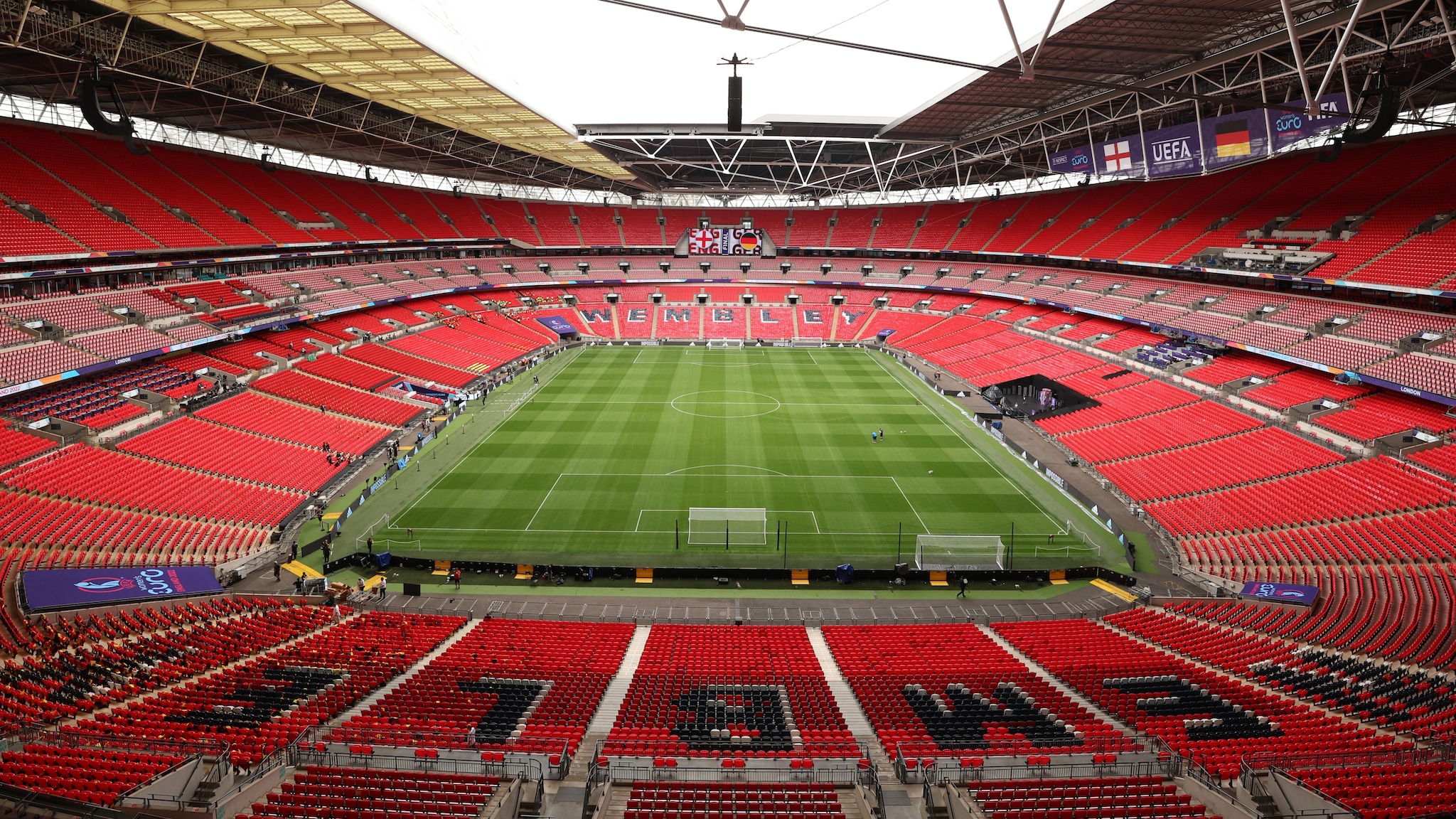
The Grand Stage: Decoding the Ideal Stadium for the UEFA Champions League Final
The UEFA Champions League Final is more than just a football match; it’s a global spectacle, a cultural phenomenon, and the undisputed pinnacle of European club football. For ninety minutes (or more), the eyes of the world converge on a single patch of hallowed turf, where dreams are forged, legends are born, and history is written. At the heart of this colossal event lies the stadium – not merely a venue, but a character in its own right, a silent witness to the drama, passion, and triumph. Choosing the perfect stadium for this ultimate showdown is a meticulous process, fraught with logistical complexities and driven by a blend of tradition, modernity, and the pursuit of an unparalleled experience.
I. The Unspoken Criteria: What Makes a Champions League Final Venue?
UEFA’s selection of a Champions League Final host city and stadium is a multi-faceted decision, weighing numerous critical factors. It’s not enough to simply have a large capacity; the chosen arena must represent the epitome of modern football infrastructure, security, and fan experience.
-
Capacity and Atmosphere: First and foremost, a stadium must possess a significant seating capacity, typically upwards of 70,000. This ensures maximum revenue generation from ticket sales and, more importantly, creates the electrifying, deafening atmosphere that has become synonymous with the Champions League Final. The roar of tens of thousands of passionate fans is an integral part of the spectacle.
-
State-of-the-Art Infrastructure: Beyond sheer size, the stadium must boast cutting-edge facilities. This includes spacious, luxurious dressing rooms for two of the world’s elite teams, dedicated media zones with ample space for hundreds of journalists and broadcasters, high-quality VIP and hospitality suites, and robust power and connectivity infrastructure for global television feeds. Modern video screens, sound systems, and pitch quality (often re-laid specifically for the event) are also paramount.
-
Security and Safety: In an increasingly complex global landscape, security is non-negotiable. The stadium must have advanced security systems, clear evacuation routes, and a proven track record of managing large crowds safely. The host city’s police force and emergency services must demonstrate the capability to manage potential threats and ensure the well-being of hundreds of thousands of visiting fans, both inside and outside the stadium.
-
Accessibility and Transport Links: A successful final requires seamless movement of vast numbers of people. The stadium must be well-connected to public transport networks (metro, train, bus), and easily accessible from major airports. Efficient crowd management strategies for ingress and egress are crucial to prevent bottlenecks and ensure a smooth experience for fans.
-
Host City Capabilities: The stadium is only one piece of the puzzle. The host city itself must be able to accommodate the influx of tens of thousands of fans, media personnel, and officials. This includes sufficient hotel capacity, a robust hospitality sector, and the infrastructure to host fan festivals, public viewing areas, and other ancillary events that transform the final into a week-long celebration. A city with a vibrant culture and experience in hosting major international events is always preferred.
-
Sustainability and Legacy: Increasingly, UEFA considers the environmental impact of the event and the legacy it leaves behind. Stadiums with sustainable design features, energy efficiency, and plans for post-event community use are viewed favorably. The host city’s commitment to social responsibility is also a growing factor.
II. Echoes of Glory: Iconic Stadiums and Their Legacies
Over the decades, a select group of stadiums has repeatedly hosted the Champions League (and European Cup) Final, cementing their place in football folklore. These venues embody the perfect blend of history, capacity, and modern amenities.
-
Wembley Stadium (London, UK): Often dubbed the "Home of Football," Wembley holds the record for hosting the most European Cup/Champions League finals (8 times, including the old and new Wembley). The new Wembley, an architectural marvel with its iconic arch, boasts a capacity of 90,000, making it one of Europe’s largest. Its accessibility in London, coupled with the city’s vast hotel and transport infrastructure, makes it a perennial favorite. The atmosphere under the arch is legendary, a fitting stage for football’s grandest occasion.
-
Santiago Bernabéu (Madrid, Spain): The venerable home of Real Madrid, the Santiago Bernabéu, has hosted the final four times. With a current capacity of over 81,000, it’s undergoing a massive, futuristic renovation that will enhance its already impressive facilities, adding a retractable roof and pitch, and a 360-degree video screen. Its central location in one of Europe’s most vibrant capitals, combined with its rich history, ensures its continued relevance as a prime candidate for future finals.
-
Allianz Arena (Munich, Germany): A modern masterpiece, the Allianz Arena (75,000 capacity) hosted the 2012 final and is slated for 2025. Known for its mesmerizing illuminated exterior, the stadium offers superb spectator comfort, excellent sightlines, and top-tier hospitality. Munich as a host city is highly organized, efficient, and welcoming, making the Allianz Arena a prime example of a modern, purpose-built stadium perfectly suited for a major final.
-
San Siro / Giuseppe Meazza (Milan, Italy): One of football’s most iconic and historic venues, the San Siro (or Giuseppe Meazza) has hosted four finals. While its steep stands create an incredible, intimidating atmosphere, its aging infrastructure presents challenges compared to newer, more modern stadiums. The ongoing debate about its future (whether to renovate or build a new stadium for AC Milan and Inter Milan) highlights the evolving demands of hosting major events. Its legacy, however, is undeniable.
-
Stade de France (Paris, France): Built for the 1998 FIFA World Cup, the Stade de France (80,000 capacity) has hosted three Champions League finals. As a national stadium, it’s designed for multi-sport events and boasts excellent transport links to central Paris. Its modern design and robust infrastructure make it a reliable choice for UEFA, despite occasional logistical challenges seen in recent events.
-
Camp Nou (Barcelona, Spain): Europe’s largest stadium with a capacity of nearly 100,000, the Camp Nou has hosted two finals. Currently undergoing a massive ‘Espai Barça’ renovation project, it promises to be an even more formidable venue once completed. Its sheer scale and the allure of Barcelona as a tourist destination make it a strong contender for future finals, offering an unparalleled capacity for fans.
III. Beyond the Pitch: The Host City Experience and Economic Impact
The Champions League Final extends far beyond the stadium gates. The host city transforms into a vibrant hub of activity, with fan festivals, public viewing areas, and a palpable buzz in the days leading up to the match. This creates a unique atmosphere that captures the imagination of locals and visitors alike.
Economically, hosting the final is a significant boon. It generates millions in direct revenue from tourism, hospitality, and retail, benefiting local businesses and creating temporary employment. The global media exposure a host city receives is invaluable, showcasing its culture, infrastructure, and ability to stage world-class events, potentially attracting future tourism and investment. The "soft power" gained from successfully hosting such a prestigious event can significantly enhance a city’s global standing.
IV. The Logistics and Challenges for UEFA
Selecting and preparing a venue for the Champions League Final is an immense logistical undertaking for UEFA. The process begins years in advance, with bids from national associations and host cities. Once a venue is chosen, a dedicated team from UEFA works closely with the stadium management, local authorities, and national football associations to ensure every detail is meticulously planned.
Challenges include coordinating complex security operations involving multiple agencies, managing the distribution of tens of thousands of tickets to various stakeholders (sponsors, clubs, general public), overseeing the elaborate broadcasting setup for hundreds of millions of viewers worldwide, and ensuring seamless transportation and accommodation for players, officials, and VIPs. The neutrality of the venue is also paramount, requiring strict measures to prevent any perceived home advantage if a local team reaches the final.
V. The Future of Final Venues: Evolution and Innovation
As football and technology continue to evolve, so too will the demands on Champions League Final stadiums. Future considerations will likely include:
- Enhanced Connectivity: Stadiums will need ubiquitous 5G connectivity to support immersive fan experiences, real-time data, and seamless communication.
- Sustainability: Even greater emphasis will be placed on eco-friendly design, renewable energy sources, waste management, and sustainable transport solutions.
- Accessibility for All: Venues will be designed to be fully inclusive, offering unparalleled access and amenities for fans with disabilities.
- Modular Design: Future stadiums might incorporate more flexible, modular elements to adapt to different event requirements and enhance post-event utilization.
- Smart Stadium Technology: Integration of AI and IoT for crowd management, predictive analytics for resource allocation, and personalized fan experiences will become standard.
The trend may also see UEFA exploring venues in emerging football markets, provided they can meet the stringent criteria, potentially bringing the final to new territories and further expanding the global reach of the competition.
Conclusion
The stadium for the UEFA Champions League Final is far more than just a place where a game is played. It is the crucible where legends are forged, a symbol of football’s global appeal, and a testament to human endeavor and passion. From the hallowed grounds of Wembley to the futuristic curves of the Allianz Arena, each chosen venue contributes its unique character to the narrative of the final. As the competition continues to grow in stature, the demands on its chosen stage will only increase, pushing the boundaries of architectural innovation, logistical excellence, and fan experience. When the whistle blows and the roar erupts, it is the stadium, silent yet majestic, that holds the collective breath of the footballing world, waiting to witness history unfold.


